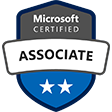Course Overview:
The focus of Red Hat OpenStack Administration I: Core Operations for Cloud Operators (CL110) will be managing OpenStack using both the web-based dashboard and the command-line interface, in addition to managing instances and installing a proof-of-concept environment using Red Hat OpenStack Platform (RHOSP) director. Essential skills covered in the course include configuring Red Hat OpenStack Platform (using the director UI); managing users, projects, flavors, roles, images, networking, and block storage; setting quotas; and configuring images at instantiation.
Attendees to CL-115 Red Hat OpenStack Administration I: Core Operations for Cloud Operators will receive TechNow approved course materials and expert instruction.
Dates/Locations:
No Events
Duration: 5 Days
Prerequisites:
This course is designed for Linux system administrators, cloud administrators, and cloud operators interested in, or responsible for, maintaining a private or hybrid cloud.
Prerequisites for this course is Red Hat Certified System Administrator (RHCSA) or demonstrate equivalent experience
Course Outline:
- Launch an instance
- Manage projects, quotas, and users
- Manage networks, subnets, routers, and floating IP adresses
- Create and manage block and object storage in the OpenStack framework
- Customize instances with cloud-init
- Deploy scalable stacks
- Deploy RedHat OpenStack Platform using RHOSP director
Comments
Latest comments from students
